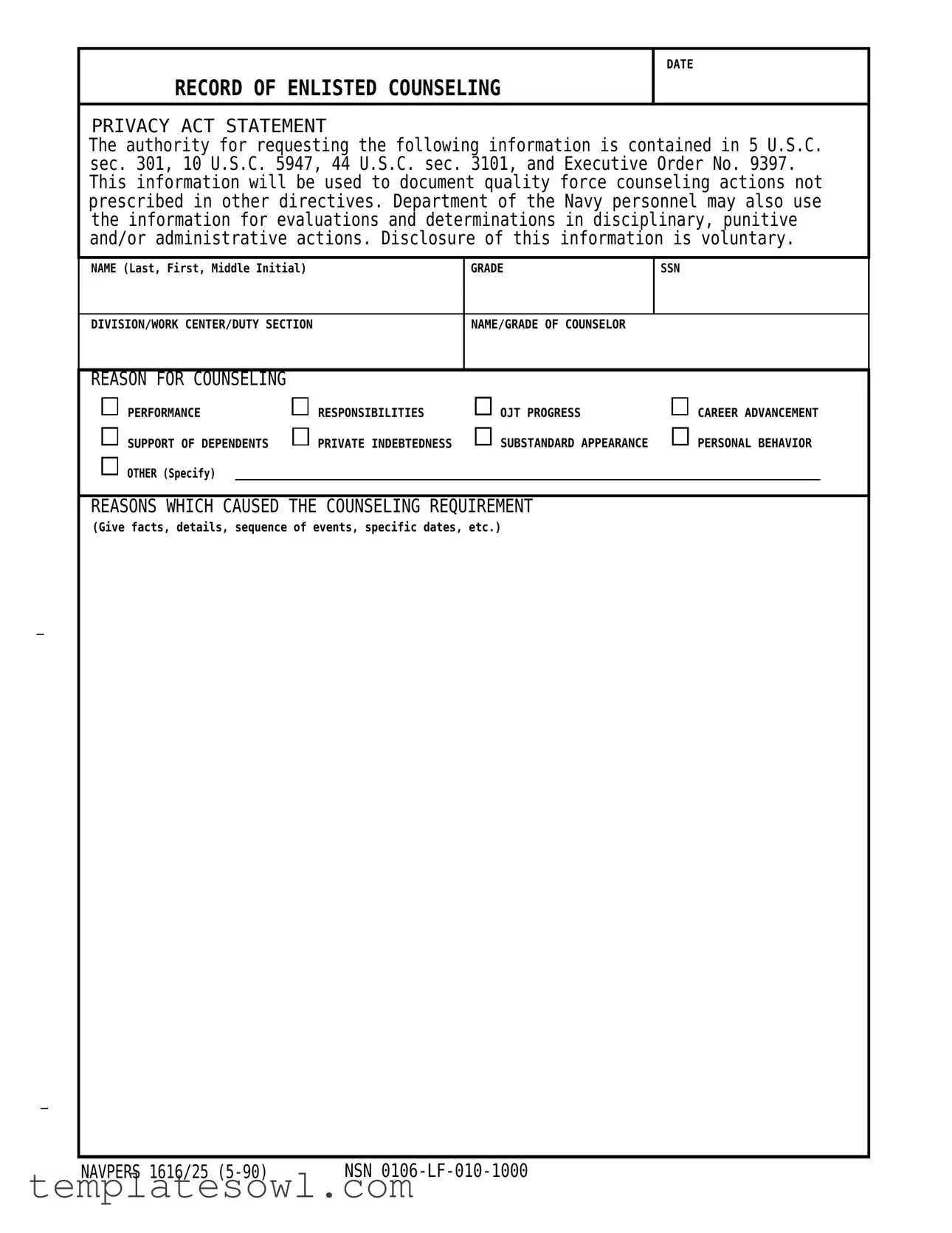Filling out the NAVPERS 1616/25 form can be straightforward, but many people make common mistakes that can lead to issues later on. One frequent error is neglecting to provide complete personal information. Failing to include all relevant details, such as the full name (Last, First, Middle Initial) or the correct Social Security Number (SSN), can hinder processing and create confusion.
Another mistake is not clearly specifying the reason for counseling. The form prompts users to identify key areas such as performance responsibilities, OJT progress, and personal behavior. Skipping this detail makes it difficult to address specific issues adequately and can delay any necessary interventions.
Inadequately outlining the reasons that led to the counseling is another pitfall. Participants often provide vague explanations rather than the required factual details and sequence of events. Without specific information, the form may not serve its purpose effectively, potentially affecting evaluations and future decisions.
Furthermore, individuals frequently overlook the planning section where they collaborate with their counselor to outline a plan for improvement. Failing to develop a clear plan can result in a lack of accountability and follow-through on agreed-upon actions.
Incorrectly signing the form can also pose issues. Signatures must include the date and clearly indicate whether the member desires to make a statement. Any ambiguity here may complicate the documentation process and create uncertainty about the member's position.
Neglecting to keep a copy of the completed form is a common misstep. Members should always retain their own records for future reference. Without a copy, there may be discrepancies or misunderstandings that arise when reviewing the counseling history.
Lastly, individuals sometimes fail to factor in the implications of the Privacy Act. It’s essential to understand how the submitted information may be used, as it could impact evaluations and administrative actions. Awareness of these considerations helps to ensure that all data shared is appropriate and relevant.


